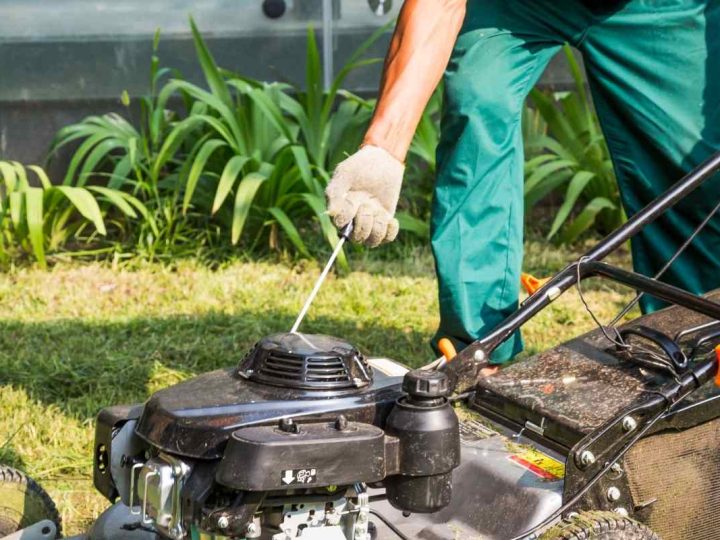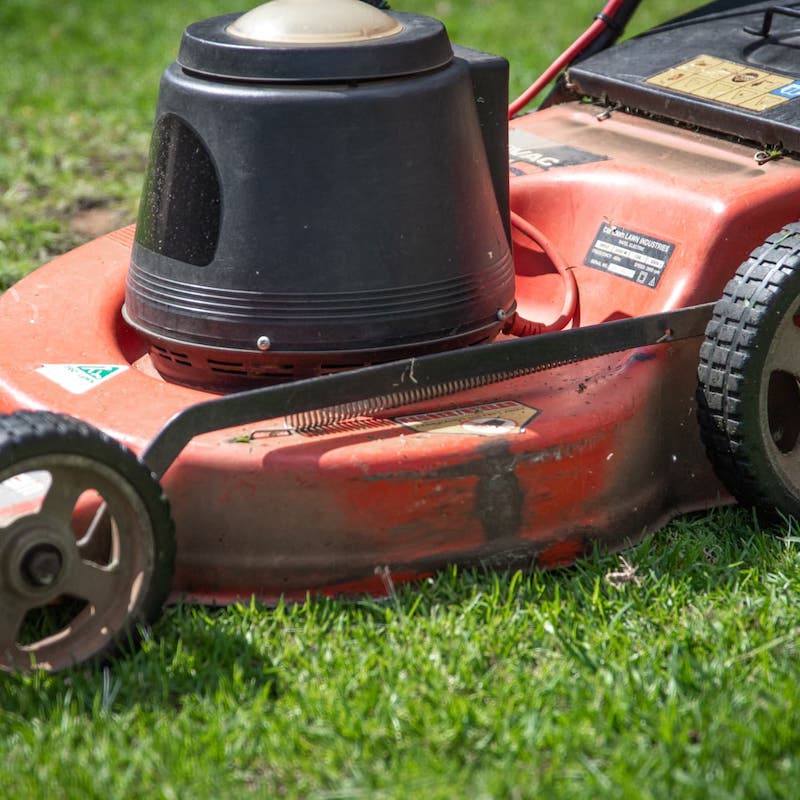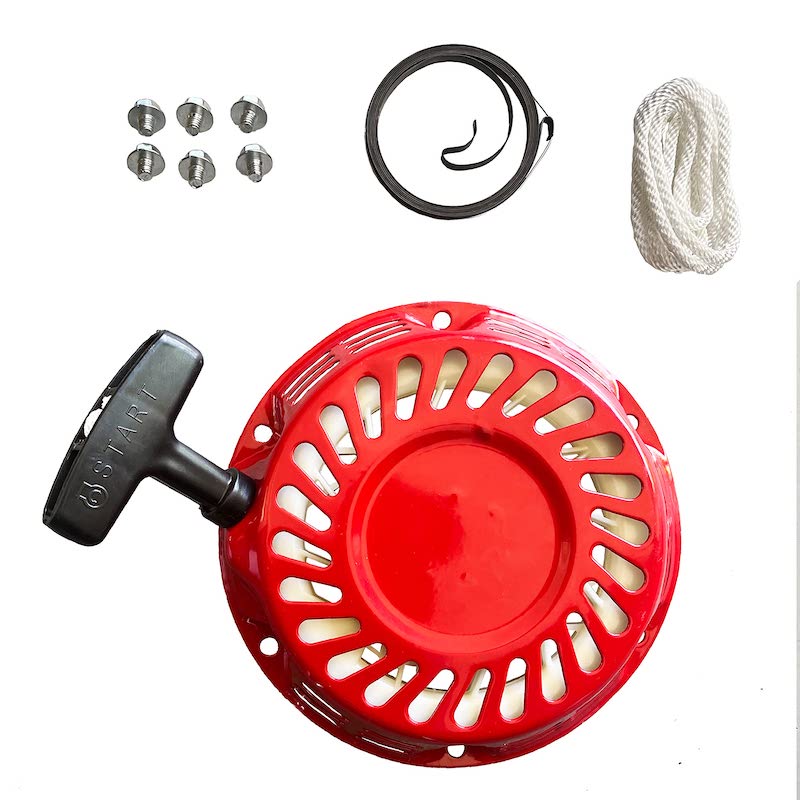Introduction to Lawn Mower Cord Problems
Dealing with a lawn mower cord won’t pull can be aggravating. Often, a relaxed weekend plan to tend to your garden comes to a halt because the mower refuses to start. The pull cord is the lifeline of a manual start mower, and when it becomes stuck, it requires prompt attention. Recognizing that this is a common issue among various lawn mower models provides little comfort when facing a stubborn cord. Efficiently addressing this problem calls for a comprehensive understanding of the potential causes and the appropriate corrective measures. Whether you’re a seasoned gardener or new to lawn care, this guide presents a straightforward approach to troubleshoot and resolve lawn mower cord issues. Keep in mind, safety is paramount in the process. In the following steps, we’ll cover how to inspect and clear the blades, lubricate the cord, resolve hydrolocking instances, repair or replace the pull cord and recoil mechanism, and finally, how to inspect the starter assembly for rust and damage. Armed with these tips, you’re on the way to restoring your mower to working order and getting back to the lawn care you enjoy.
Safety First: Preparing to Fix the Lawn Mower Cord
Before attempting to fix a lawn mower cord that won’t pull, prioritize safety. Here’s what you should do:
- Turn off the mower – Ensure the mower’s engine is off and that it has cooled down.
- Disconnect the spark plug – This prevents the mower from accidentally starting. Grab the wire and gently pull it away from the plug.
- Wear protective clothing – Put on gloves to safeguard your hands and goggles to protect your eyes.
- Work in a clear area – Choose a well-ventilated space with ample room to move around the mower.
- Have your tools ready – Gather the necessary tools such as wrenches, pliers, and lubricant. This makes the process smoother.
- Refer to the manual – Before you start, check your mower’s manual for any specific safety instructions.
Taking these precautions helps you avoid injuries and additional damage to the mower. With these steps, you’re ready to tackle the cord issue safely.
Step 1: Inspecting and Clearing the Blades
Inspecting and clearing the mower blades is the first crucial step. Twigs, rocks, and clumps of grass can obstruct the blades, causing the cord to stick. Begin by making sure the spark plug is disconnected to prevent the mower from starting unexpectedly. Turn the mower over and carefully remove any debris that might be jamming the blade. This can often resolve the issue and allow the cord to pull freely.
Do this with care to avoid any injuries. Look for clumps of wet grass or mud that might be lodged tightly. Sometimes, just rotating the blade back and forth can dislodge small bits of debris. After clearing the area, reconnect the spark plug and try the pull cord again. If the cord still won’t pull, you may need to look into further steps outlined in this guide.
Step 2: Applying Lubricant to Ease the Cord
When your lawn mower cord won’t pull smoothly, lack of lubrication could be the issue. After checking for blade obstructions, the next simple step is to apply a lubricant. You want to aim for the cord itself and the parts it interacts with.
Here’s how to proceed with lubrication:
- Select the right lubricant – A silicone-based spray or WD-40 is often recommended by experts.
- Apply the lubricant – Spray a small amount directly onto the pull cord. Target areas where the cord retracts and on any exposed moving parts.
- Test the cord – After applying, gently pull the cord to distribute the lubricant. It might improve cord movement.
- Re-check the cord – If it’s still tough to pull, reapply a bit more lubricant. Be patient and try pulling a few more times.
Remember, it’s not a guaranteed fix, but many people find that lubrication helps make the cord easier to pull and can be part of regular mower maintenance. If the problem persists, additional steps outlined in this guide will be your next recourse.
Step 3: Resolving Hydrolocking Issues
When a lawn mower’s engine becomes hydrolocked, it means that fluid has entered the cylinder. This prevents the piston from moving correctly. Fixing this issue is crucial for the pull cord to work.
Here are the steps to resolve hydrolocking:
- Remove the spark plug: Carefully take out the spark plug to inspect for wetness, indicating fluid presence.
- Drain the fluid: With the spark plug out, pull the cord a few times. This helps eject any trapped fluid from the cylinder.
- Dry the spark plug: Clean and air-dry the spark plug or replace it if necessary.
- Allow air-dry: The engine cylinder needs to be dry. Wait a few hours after draining before reassembling.
- Reassemble and test: Put back the spark plug and attempt to start the mower.
By taking these steps, you should be able to fix the hydrolocking, making the pull cord move freely again. If this does not resolve the issue, further inspection might be needed.
Step 4: Examining and Repairing the Pull Cord and Recoil Mechanism
When your lawn mower cord won’t pull, checking the recoil mechanism is key. It’s responsible for winding the cord back into place. If it’s faulty, the cord can get stuck or feel loose. Here’s how to inspect and repair it:
- Access the recoil mechanism – Remove the mower’s housing to expose the recoil mechanism. This usually involves unscrewing a few bolts.
- Examine the recoil spring – A broken or dislodged spring could be the culprit. If this is the case, you might need to reset it or replace it.
- Check for tangled cord – If the cord is tangled, carefully remove it and straighten it out. Realign it correctly on the spool.
- Inspect for wear and tear – Look for any signs that the cord or its parts are worn out. If so, they will need replacements.
- Test the tension – Once the cord is in place, make sure it has the right tension. Too loose and it won’t retract; too tight and it could snap.
- Reassemble the housing – After making the necessary repairs, put the housing back on and secure it with the bolts.
- Give it a pull – With the spark plug still disconnected, carefully pull the cord. Check if it retracts smoothly. If it does, reconnect the spark plug and try starting the mower.
Common signs of recoil mechanism problems include a cord that pulls and retracts too quickly or slowly. Taking time to fix this will help you avoid further frustrations. If the problem remains after these steps, you may need a professional’s help or a full replacement of the recoil mechanism.
Step 5: Checking the Starter Assembly for Rust and Damage
When you have ruled out other issues, inspect the starter assembly for rust and damage. This part can sometimes be the reason why a lawn mower cord won’t pull. Here is a step-by-step guide to help you through this process:
- Remove the starter assembly housing – Unscrew the housing to get to the starter assembly.
- Look for rust on the ball bearings – Rust can prevent smooth movement.
- Clean with steel wool – If you find rust, gently scrub it off with fine steel wool.
- Lubricate the assembly – Apply a small amount of oil to the ball bearings.
- Check the spring – Make sure the recoil spring is wound properly and not damaged.
- Reassemble and test – Put everything back and pull the cord to see if it moves freely.
By ensuring that the starter assembly is clean and in good working condition, you increase the chance that your mower will start when you pull the cord. This is often an overlooked part of lawn mower maintenance, but it is essential for a properly functioning pull cord.

Additional Tips and Common Questions
When dealing with a lawn mower cord that won’t pull, you want quick, effective solutions. Here are additional tips and common questions to help streamline the process and provide clarity.
Quick Checks to Avoid Unnecessary Repairs
- Examine the cord before starting. Look for frays or knots that could hinder movement.
- Check the handle. Make sure you’re pulling the cord at the correct angle and with enough force.
- Review the mower’s history. Has this issue happened before? Recurring problems may need expert advice.
Frequently Asked Questions (FAQs)
- Can a lawn mower cord be too long? Yes, a cord that’s too long can tangle and create resistance.
- How often should I lubricate the pull cord? At least once a season or as needed.
- Are all pull cords replaceable? Generally, yes, most cords can be replaced with a similar type.
Understanding these additional tips can prevent unnecessary work and guide you through common setbacks. Along with these FAQs, maintaining regular mower inspections will aide in keeping cord issues at bay. In conclusion, always remember maintenance is key to a reliable lawn mower. Take the time to perform regular checks and you’ll avoid many common cord problems.
Conclusion: Maintaining Your Lawn Mower for Reliability
Keeping your lawn mower in good shape is key to reliable performance. Regular maintenance can prevent many common cord issues. Follow these final tips to keep your mower ready for action:
- Perform regular checks: Look over your mower before each use for wear or potential problems.
- Clean after use: Remove grass clippings and debris from the blades and undercarriage after mowing.
- Store properly: Keep your mower in a dry, safe place to avoid rust and other damage.
- Lubricate moving parts: Apply oil to the pull cord mechanics and other moving parts seasonally.
- Handle with care: Use the pull cord gently to avoid harsh tugs that can cause damage.
- Schedule yearly check-ups: Consider a professional service once a year for a thorough inspection.
By staying on top of maintenance, you’ll reduce downtime. This ensures your mower will start easily and run smoothly. Remember, a little care can go a long way in extending the life of your lawn mower. Keep it in prime condition, and it will keep your lawn looking its best.


